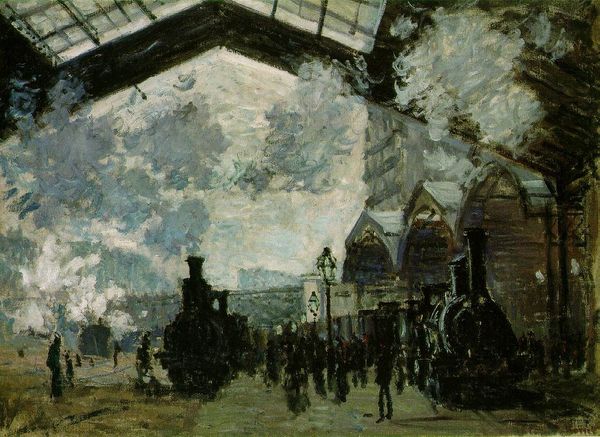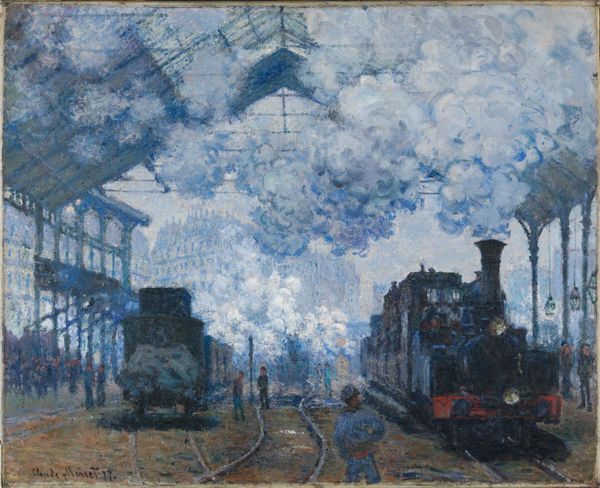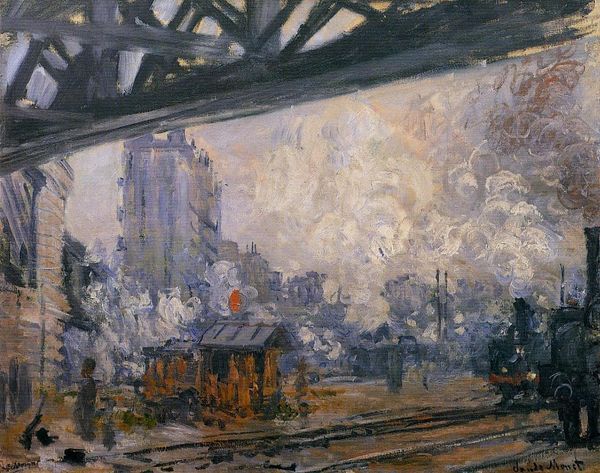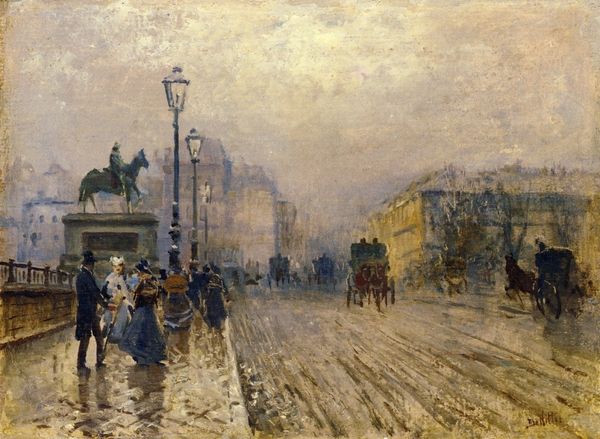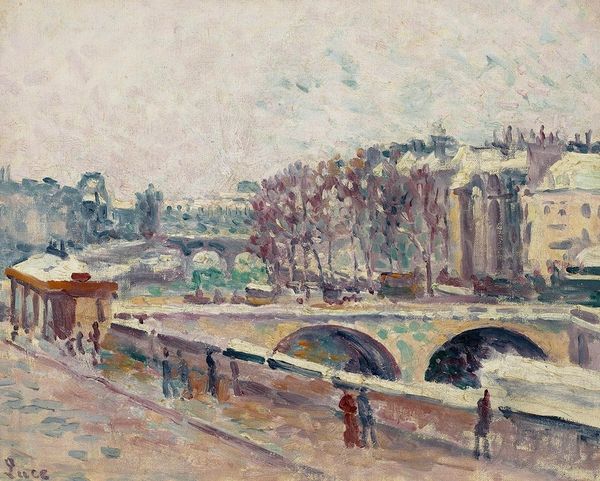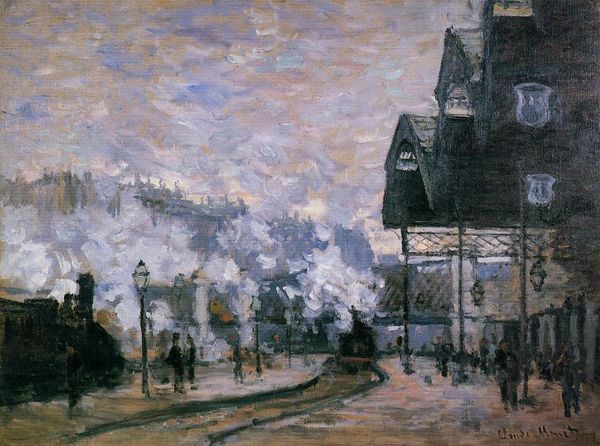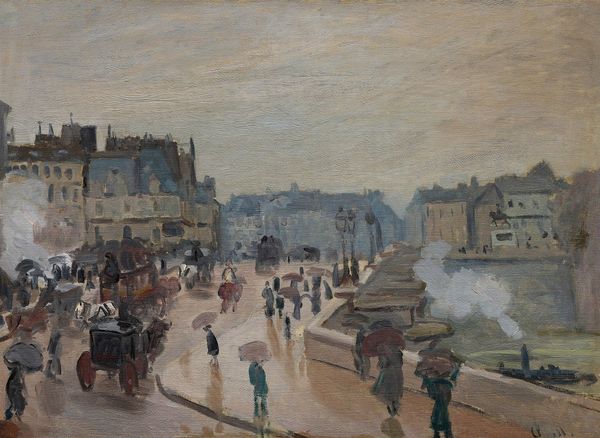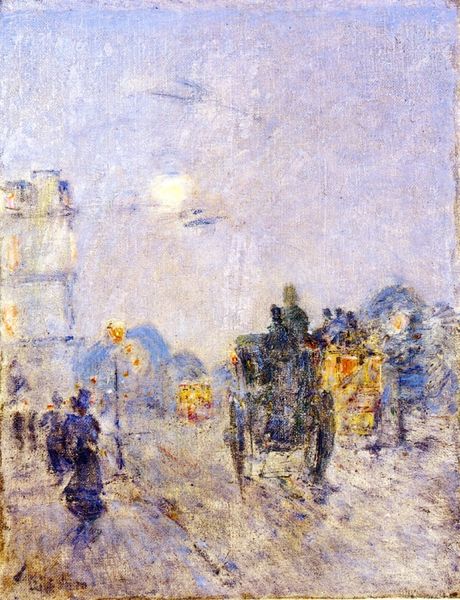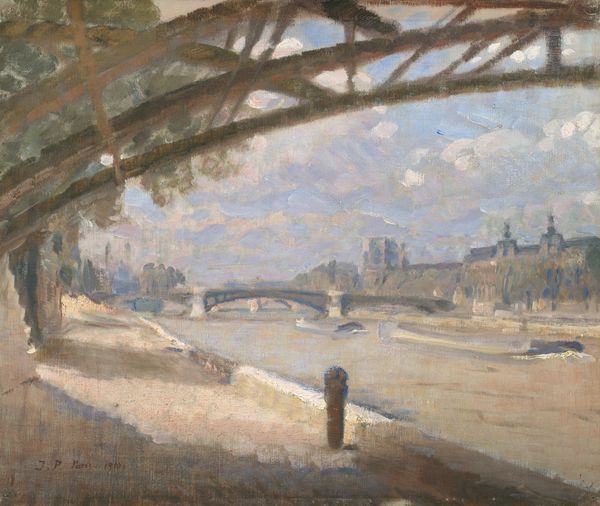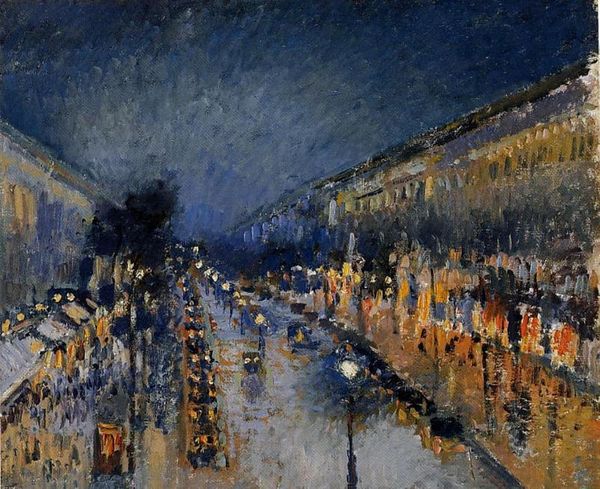
painting, oil-paint
#
painting
#
impressionism
#
impressionist painting style
#
oil-paint
#
landscape
#
impressionist landscape
#
oil painting
#
cityscape
#
modernism
Copyright: Public Domain: Artvee
Curator: Here we have Claude Monet's "Arrival of the Normandy Train, Gare Saint-Lazare," painted in 1877. Editor: It's incredibly atmospheric! The light seems to diffuse through the steam and the ironwork, almost blurring the industrial edges of the train station. Curator: Absolutely. Monet's interest here is less about documenting the literal appearance of the Gare Saint-Lazare, and more about capturing the sensory experience of modernity. Consider the political context. France, recovering from the Franco-Prussian War and amidst rapid industrialization, needed to express a renewed vision for its future. Monet does it, perhaps unconsciously, situating us within a sense of hope and possibility. Editor: You know, focusing on materiality, the steam is almost a character in itself. Its production from the burning coal seems to overwhelm the architectural space. It speaks volumes about industrial power transforming social environments and working-class conditions. One wonders if that "hope and possibility" was shared by the engine drivers covered in soot. Curator: A poignant counterpoint! And a necessary reminder to consider varying experiences across social strata. Monet indeed presents us with ambiguity, even in this optimistic portrayal of progress. Notice the way the light and smoke interplay. Editor: The paint handling is incredible too. Look at how he uses those loose brushstrokes to suggest rather than define form. You feel the heat of the steam; you can almost hear the hissing and clanging. I find it remarkable that these impressionist techniques emerged just as photography started gaining ground; artists responded by doing things photographs just couldn't do. Curator: It's interesting how Monet subverts the traditionally "stable" genres of history and landscape painting. Here he gives us a liminal space—a place of transition—mirroring the shifts in late 19th-century European culture. One begins or ends their journey, an embodiment of a state in flux! Editor: Absolutely, it is an era defined by constant change and a fascination with how it feels. Well, thinking about materials and modes of production in 1877 adds real depth to the reading. Curator: Examining the social impact helps enrich the artistic intention and artistic practice. Together, hopefully we offered a wider understanding of this moment.
Comments
No comments
Be the first to comment and join the conversation on the ultimate creative platform.

